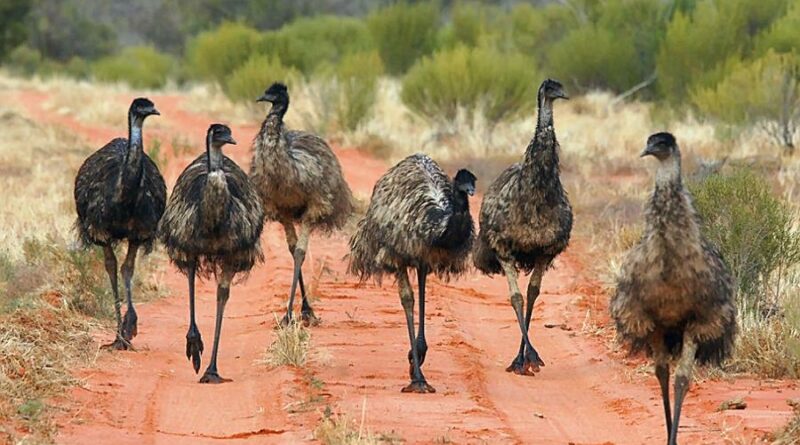Australia’s Fight with Big Bird and His Pals 100 Years Ago
It all began November 2nd, 1932 in Australia. There was a mass overpopulation of emus running around in huge flocks that wouldn’t stop for anything. Emus have been a protected native species up to 1922, but they would run amok and trample wheat and eat them down to the roots. At this time, they put a bounty on their beaks.
The main reason this happened is because veterans from WWl were buying land and building houses and farms live on. This was a problem because it forced all of the emus to leave. Once a lot of the land was taken up, there were just too many emus and not enough land. So one the bounty was put out, the veterans called the military because they didn’t have enough ammunition to get them off their lawns. This was the point where all the havok started.
The army finally set out with a plan in mind, they would follow flocks from behind and pick them off one by one. Once they found a group and started shooting though, the flock would separate and run wild. They even tried to wait for the flocks to come to them and fire at point blank range. However at the first sign of danger the head of the flock would signal and the rest would scatter.
After realising this would be more difficult than they thought, they launched a second campaign on November 13 which started with around 40 emus killed. About a month later, they were getting near 100 a week. Even though they were rising higher, they were running out of ammunition. It took about 10 bullets to take out one bird.
At the end of 6 months, around 57,034 emus lives were claimed in 1934. If you think back to 10 bullets per bird, that’s nearly 570,340 of all ammunition used just to get a six foot tall bird. So after this six month period of desperately trying to get these birds out of their way, they decided to leave a bounty on these great big birds, but to leave the army out of it.
In the end, Australia lost to a bunch of birds. As of now, there are between 625,000 and 725,000 wild emus living in Australia. The farmers still deal with the emus, but they have swindled them down enough so that their farms produce wonderfully and they can prosper.

